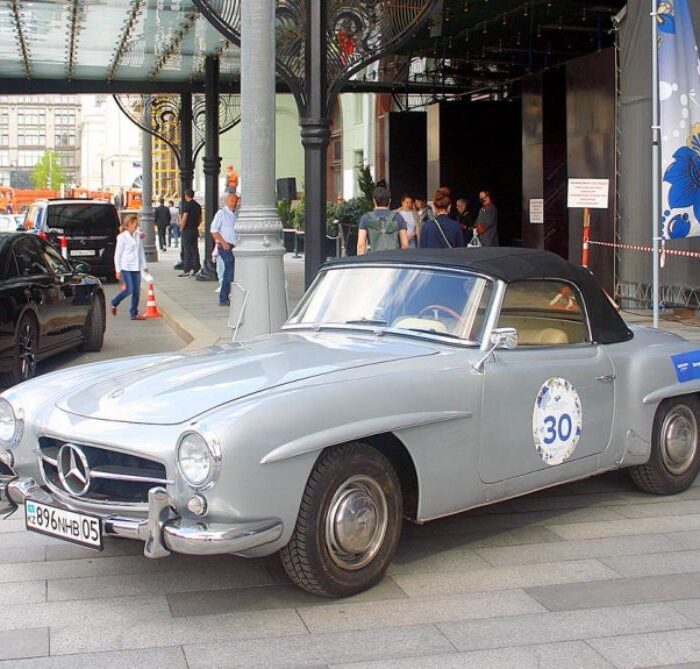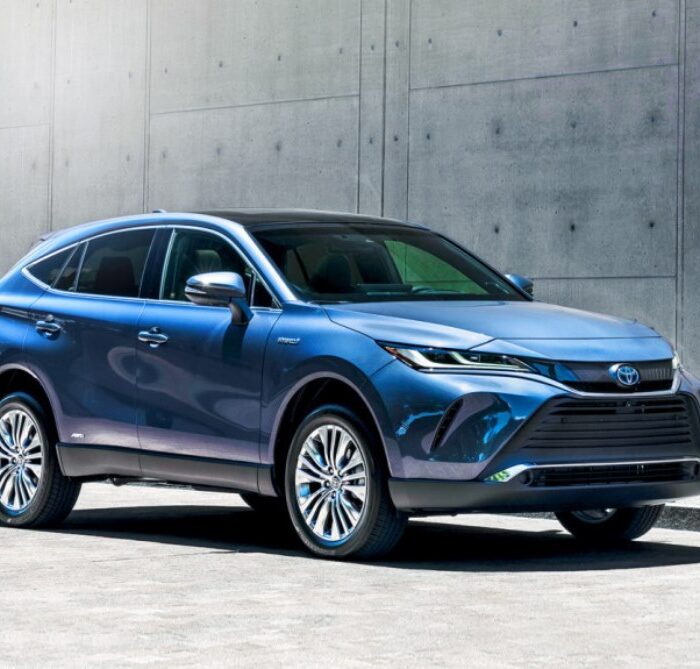In a world where the basic necessity for personal transportation has long been met, enthusiasts still seek the thrill of driving. Enter the new reality brought forth by three distinct personalities: the latest Toyota GR86, Honda Civic Type R, and Mini John Cooper Works.
Now, venturing into this alternate realm of automotive excitement has become more accessible than ever. Thanks to a robust ruble, fascinating vehicles that were never officially available in Russia can be imported at the cost of a new Patriot or some obscure Chinese crossover. Indeed, without some misfortune, we might never have experienced such driver’s bliss.

I hold in my hand a nondescript key fob, exchanged for two million six hundred thousand rubles. It’s made of black plastic with a couple of buttons and bears the Toyota emblem—my signal to a red coupe that blinks in response. “Hello, GR86,” I greet the car that I’d only previously known through numerous videos by overseas auto journalists and bloggers who’ve burnt through countless sets of tires on racetracks and serpentine canyon roads. Yet, it was my friend Sergey Udov’s spontaneous discovery of this coupe for sale in Vladivostok that sparked his interest. A fan of the twin models, the Toyota GT86 and Subaru BRZ, he previously owned three such vehicles and now possesses the first Toyota GR86 in Russia. This second-generation coupe remains a joint venture predominantly leaning towards Subaru.

Lifting the relatively heavy hood, which remains steel though the roof and front fenders have transitioned to aluminum, I’m greeted by the familiar boxer engine and similar strut top mounts. The suspension setup also remains structurally identical—McPherson struts at the front and a double wishbone at the rear with two separate lower “sticks” that I personally regard as a multi-link system. As always, Toyota and Subaru differentiate themselves through their tuning. While the GT86 was traditionally more comfortable, the tables have turned—the GR now appeals more to track-day enthusiasts than the BRZ. Despite Subaru featuring aluminum steering knuckles and Toyota opting for heavier steel, the GR’s sway bars are stiffer. Additionally, Toyota’s spring settings render it nimbler and more youthful, while the BRZ has matured in character. As the GR86 aggressively dives into corners, breezes past apexes, and gracefully drifts under power, it becomes clear that maturity is entirely overrated here.

As I navigate another curve, the experience repeats: sharp, precise responses on entry, seamless transitions from brake to gas, and immediate power slides with minimal angle. The rear tires spend the entire second gear up to the 7400 rpm redline skidding, only finding traction on the frosty November asphalt of the test track in third gear. It’s worth noting that the standard tire width remains a modest 215 mm, though the diameter has increased to 18 inches, one inch more than before. This choice sets the behavioral theme: the GR86 is akin to a puppy chasing its tail, perpetually “tail happy.”


How else could it be when the engine, with a mere addition of 400 cubic centimeters of displacement, has undergone a fundamental transformation? Previously a first-rate performer that only shone at its limits, straining tendons and the fourth cylinder, it has evolved into a master of sports, effortlessly managing its 215 mm wide wards by mid-rev range. The mid-range is now delightfully robust! Between 3500—5000 rpm, this engine can effortlessly manage daily driving demands. The maximum torque has increased from 205 Nm to 250 Nm—and this shift in figures has significantly altered its performance. Moreover, full power is now accessible at just 3700 rpm—three thousand sooner than before. Subjectively, it feels like you’ve traded a downsized engine for a robust inline-six, akin to a BMW M50B25. Yet, the Subaru-Toyota FA24D is more capable: even on cold asphalt and relatively slippery tires, the Toyota GR86 sprinted to 100 km/h in 6.6 seconds, a task that the previous generation could only achieve with skillful and somewhat merciless handling.

But it’s the rolling acceleration that truly impresses. There’s no longer a need to continuously downshift to the lowest possible gear—leave the engine in third out of a corner, and it will power through. Doubtless, Subaru enthusiasts are already commenting that there’s nothing Toyota about this engine. But let me remind you—what about the combined injection system?

Toyota excels in creating effective combinations: blending pleasant with practical. It’s clear that most of our time on the track was spent indulging in controlled slides, enjoying the precise and sharp steering, the surprisingly cohesive reactions, the predictable behavior of the Torsen limited-slip differential, and the overall sensation of a fine sports car. Yet, despite all the fun, the GR86 boasts a commendable ride quality—making daily driving far from torturous.

Visibility is commendable, and the cabin avoids looking like a cheap prop for a children’s play. While the materials are generally simple, the design is successful, and even the transition to a digital dashboard has been smoothly executed. Notably, there’s now a standard oil temperature gauge, a feature most previous GT86 and BRZ owners had to install aftermarket to monitor engine health. Fortunately, there have been no reported instances of engine knocking with the 2.4 unit, and I am hopeful that the infamous issue of scoring in the fourth cylinder is a thing of the past.


The Toyota GR86 continues to be an excellent partner for mastering rear-wheel drive techniques. But it also promises to keep even the most experienced drivers engaged: on a racetrack, it’s capable of humbling the owners of far more powerful machines.

In essence, it’s the ideal choice for another Sergey, the owner of the fiery red super-hatch Honda. Having raced in amateur motorsports on front-wheel drive for over a decade, he long contemplated a shift to another class. However, the opportunity to acquire a new Type R at a significant discount from a Dutch dealer’s stock made the decision for him. And frankly, much as I admire traditionally configured vehicles—especially genuine ones like the GR86—after just a few meters behind the wheel of the Honda, any debate over the merits of its drivetrain configuration dissipated because this Type R is simply splendid.

It’s so outstanding that Honda found no need to make changes with the generational shift—the latest hatchback remains configured just as its predecessor. The foundational elements of modern “hot hatches” include a two-liter turbocharged engine (producing 320 hp here), a McPherson strut front suspension with a steering knuckle separated from the strut, and a multi-link rear suspension. This Type R is a rarity: when this model was last officially sold in Russia, it featured a naturally aspirated engine and a torsion beam connecting the rear wheels.

However, the quintessential traits of speedy Hondas endure. The seats are superb, rivaling Toyota’s for their supportive embrace but surpassing them in comfort on long drives. The gear shift mechanism is nothing short of magical. I thought shifting in the Toyota was delightful, even one-handed. But Honda redefines the true joy of shifting. The cold aluminum knob quickly warms to the touch, fueled by your affection for its precision and the satisfying click of gears engaging. Unlike in the GR86, where the lever extends directly from the transmission, here the transversely mounted engine requires linkages to connect to the gearbox.




But when you’re dealing with cold autumn asphalt, harnessing all 320 hp and 400 Nm of torque on front-wheel drive becomes a challenge! Even in third gear, the Type R’s wheels are prone to spin out, and in direct drag races, the less powerful Toyota often pulled ahead. Only in a controlled, non-competitive test did the Type R manage to clock near its specification of 6.1 seconds to 100 km/h. However, it’s hard to say its acceleration is more impressive than Toyota’s—perhaps there’s a protective mode that disengages after the first service? Notably, the Type R’s top speed falls short of the promised 272 km/h, plateauing at 252 km/h instead. Its stability at high speeds, however, is impeccable.


Interestingly, Honda’s engineers have opted not to use modern twin-scroll turbochargers. To extract 320 horsepower from two liters requires a large, high-inertia turbine wheel, resulting in a noticeable turbo lag. You press the accelerator and wait for the revs to build to 4000 rpm before the engine explosively comes to life, necessitating a quick shift to the next gear. Thus, the Toyota’s nuanced throttle control is unmatched here.

The GR86 isn’t flawless either, exhibiting noticeable hesitations at low rpms. Yet, for the Honda, these subtleties of control aren’t as crucial; its chassis is designed for fast, sweeping driving styles. The feel of the steering and the car’s responses when entering a corner are akin to the Toyota’s—quick and unified—but with virtually no body roll, unlike the GR86 which allows for slight dips. Beyond this, the Toyota demands finesse to maintain control during drifts, whereas driving the Civic involves aggressively steering into turns and flooring the gas, letting the limited-slip differential do its work. With such power, nearly every turn can be executed in a controlled slide—swiftly. The electric power steering, lackluster in standard driving, excels here by instantly signaling the onset of a slide by reducing steering effort. Experiencing too much understeer? A quick lift off the gas followed by an immediate reapplication can correct the trajectory.


Honda’s cornering capabilities are evidently superior, its suspension and broad 245 mm tires providing exceptional grip. And the brakes are outstanding! Given the car’s 62 to 38 weight distribution, it relies heavily on the front brakes: the four-piston fixed calipers eliminate any concerns about braking power and feedback, despite non-ventilated rear discs. The GR86, with a 55% front axle weight distribution, might find itself wanting more robust brakes on the track, unlike its standard floating calipers paired with 294 mm discs. It’s no surprise a factory version with Brembo calipers is available.

Yet, why doesn’t this Type R leave the same grin on my face as it did five years ago when I first encountered it? It’s not just the presence of the Toyota. It turns out you can adjust the front wheel camber on the Civic from a modest half-degree to a significant two degrees. It seems this adjustment was employed on the demo car, which so effortlessly played with me under throttle lift-off and generally seemed less front-driven.

Now, the standard Type R, when compared to other cars, comes off as overly serious and somewhat uptight. It seems to say, “Give me a track, and I’ll show what I can do. Leave your winding roads for the little ones.” No wonder the Honda weighs in at 1422 kg, while the Toyota is at 1280 kg, and the Mini at 1324 kg.

Haven’t you forgotten about it yet? Though no longer particularly mini compared to previous generations, it remains compact. Moreover, only its John Cooper Works version was officially sold in Russia; according to Kirill, the owner of this JCW, the Mini People club was an excellent marketing tool. Feeling the support of such a community makes you less likely to switch brands. But ultimately, it’s the emotions that Mini, especially the John Cooper Works, delivers.



While I’m not a fan of these vehicles and preferred the hatchback from the previous generation, it’s hard to deny that the JCW creates an ambiance and brings a smile. It’s perceived as the liveliest and lightest in our group. At the entrance to a turn, the Mini seems to shed all the extra weight of its maximum trim. The powerful sound system and hefty panoramic roof are left behind, and by the time you turn the wheel, it’s just you and this short-wheelbase rascal. From a nod of the steering wheel to drifting, it takes just one throttle lift—JCW is always eager to increase the angle of attack. Even the automatic transmission doesn’t hinder the growing excitement, especially with such ease of acceleration. Press both pedals at the start, activate launch control, and there you go: 6.3 seconds to 100 km/h, time and again. While drivers in the other two cars struggle with the clutch and try not to miss a gear, Mini confidently surges ahead.



Thanks to this cheeky character, I realized why I wouldn’t prefer the much more precise and sporty Toyota over my Mazda MX-5. Because the Miata is playful and imparts a sense of extreme lightness—on that day at the test track, only the Mini captured this essence.


JCW’s suspension is remarkable—in that it mercilessly shakes you but fails to dampen effectively. This is particularly shocking after experiencing the Honda with its magical electronically adjustable struts, which, in Comfort mode, carry this elaborately aerodynamic body like a Mercedes W124. Unlike the Toyota, the Mini’s rear seats are not merely nominal. However, there’s practically no trunk space, while the GR86 can still carry a set of track day wheels. And the larger Civic Type R surpasses them all in terms of cargo and passenger capacity.



Yet, this predetermined its victory in the sum of expert points. But as an experiment this time, I suggest considering an intermediate result more significant and correct, in which rear seats and trunks are not factored in—we didn’t gather at the test track for them. In such a scenario, the winner, albeit by a minimal margin, becomes the Toyota GR86. After all, in terms of the complexity of control techniques and the level of driver-car interaction, rear-wheel drive is evidently superior. Especially when that rear-wheel drive functions as well as it does in the Toyota. A true driver’s fairy tale, after which returning to reality is particularly melancholy.

Here’s the performance data for the Honda Civic Type R, Mini John Cooper Works, and Toyota GR86:
| Parameter | Honda Civic Type R | Mini John Cooper Works | Toyota GR86 |
|---|---|---|---|
| Maximum Speed (km/h) | 252 | 233 | 183* (Electronically limited) |
| Acceleration 0—60 km/h (s) | 3.42 | 4.7 | 3.2 |
| Acceleration 0—100 km/h (s) | 6.1 | 6.3 | 6.6 |
| Acceleration 0—150 km/h (s) | 11.5 | 12.4 | 13 |
| Acceleration 0—200 km/h (s) | 20.9 | 25.2 | — |
| 400m Distance (s) | 13.8 | 14.1 | 14.2 |
| 1000m Distance (s) | 24.8 | 25.7 | 27.5 |
| 80—120 km/h in 4th gear (s) | 4.2 | 4.1** (Drive Mode) | 5.8 |
| 50—170 km/h (s) | 11.9 | 14 | 14.6 |
* for the Toyota GR86 indicates that the maximum speed is electronically limited.
** for the Mini John Cooper Works indicates the measurement was taken in Drive mode.
Weight:

Photo: Dmitry Piterskiy
Expert group: Yaroslav Tsyplenkov
This is a translation. You can read the original article here: Сказка братьев GR. Новейшее купе Toyota GR86 против хот-хэтчей Honda Civic Type R и Mini John Cooper Works

Published November 28, 2024 • 11m to read





